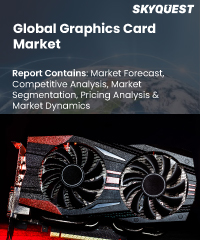
Product ID: SQMIG45I2093

Report ID:
SQMIG45I2093 |
Region:
Global |
Published Date: April, 2024
Pages:
197
|
Tables:
95 |
Figures:
76
In March 2024, NVIDIA announced the launch of the RTX 4080 SUPER graphics card, the highest-end model in their RTX 40 series.
In February 2024, Japanese manufacturer Sycom launched the RTX 4080 Super graphics card as part of its G-Master Hydro series. This cutting-edge graphics card features an additional proprietary liquid cooling technology, which helps reduce both the temperature and fan noise during high loads.
In October 2023, Advanced Micro Devices (AMD) Inc. announced that it had acquired Nod.ai, a startup that develops open-source software for speeding up artificial intelligence models, for undisclosed financial terms. At the go-to-market level, the Nod.ai acquisition could help AMD make its AI accelerators more competitive with Nvidia’s graphics cards.
Our industry expert will work with you to provide you with customized data in a short amount of time.
REQUEST FREE CUSTOMIZATIONWant to customize this report? This report can be personalized according to your needs. Our analysts and industry experts will work directly with you to understand your requirements and provide you with customized data in a short amount of time. We offer $1000 worth of FREE customization at the time of purchase.

Product ID: SQMIG45I2093